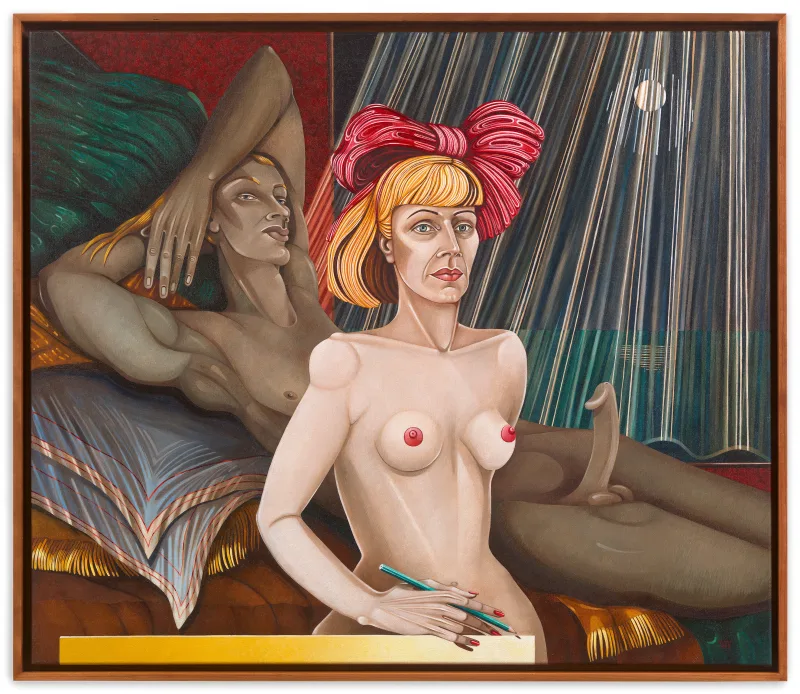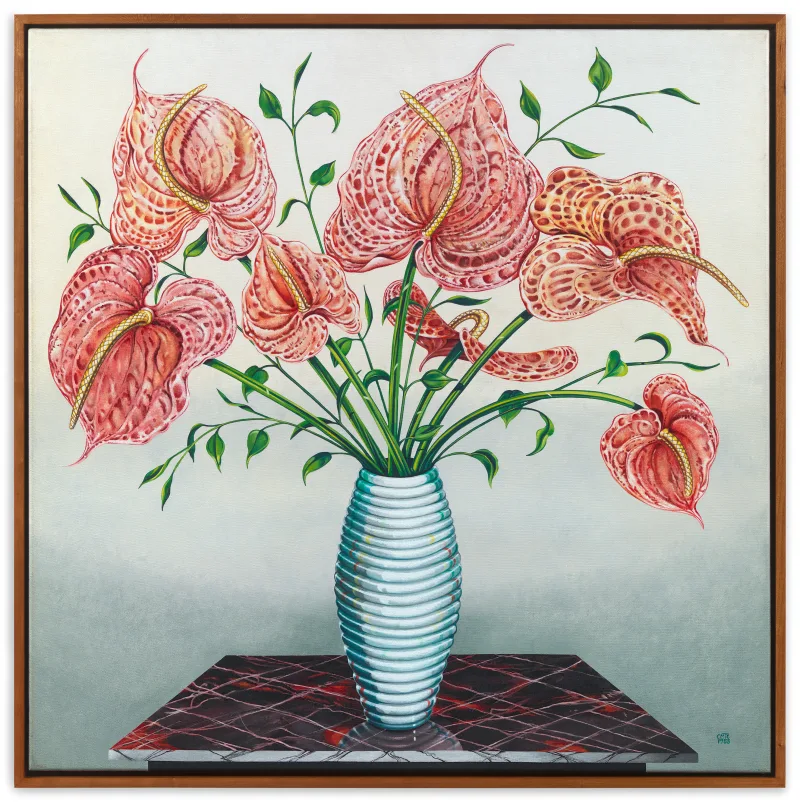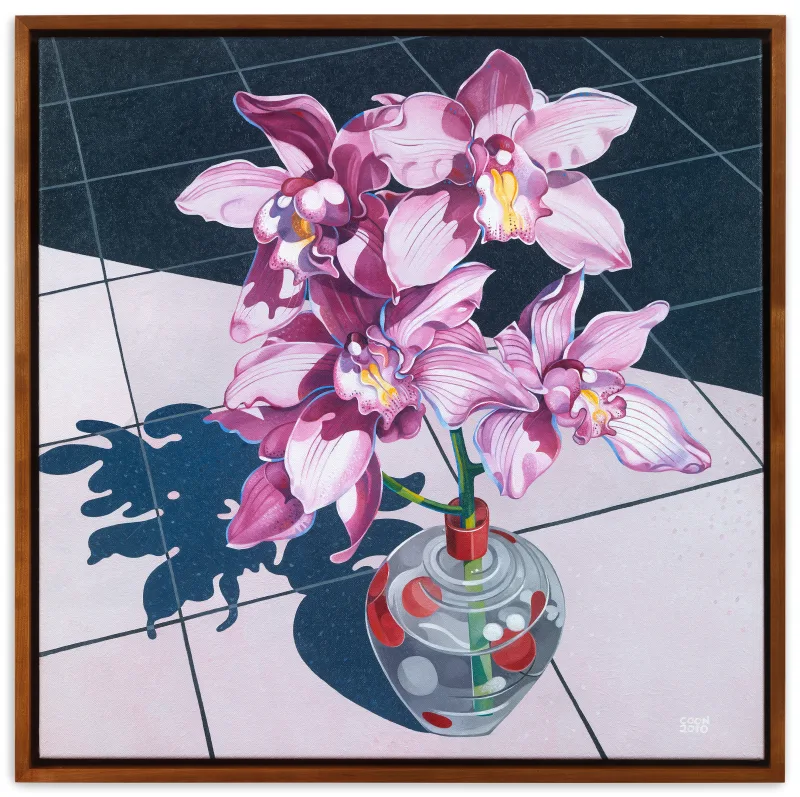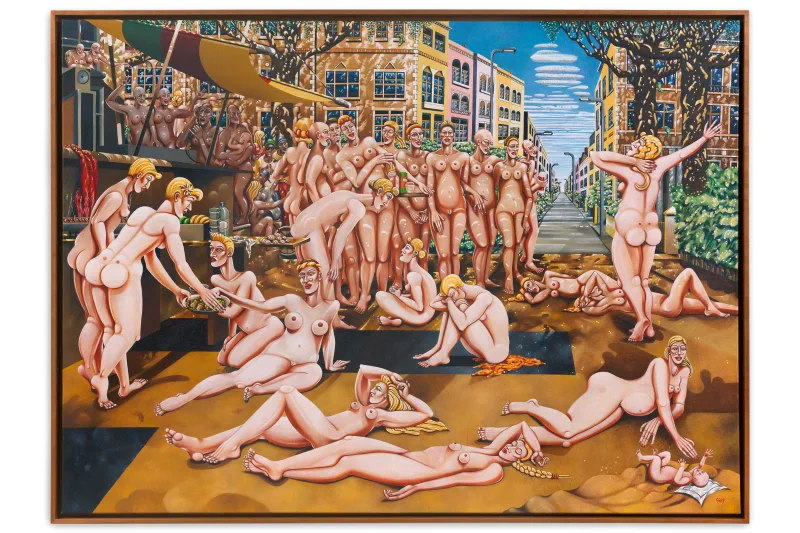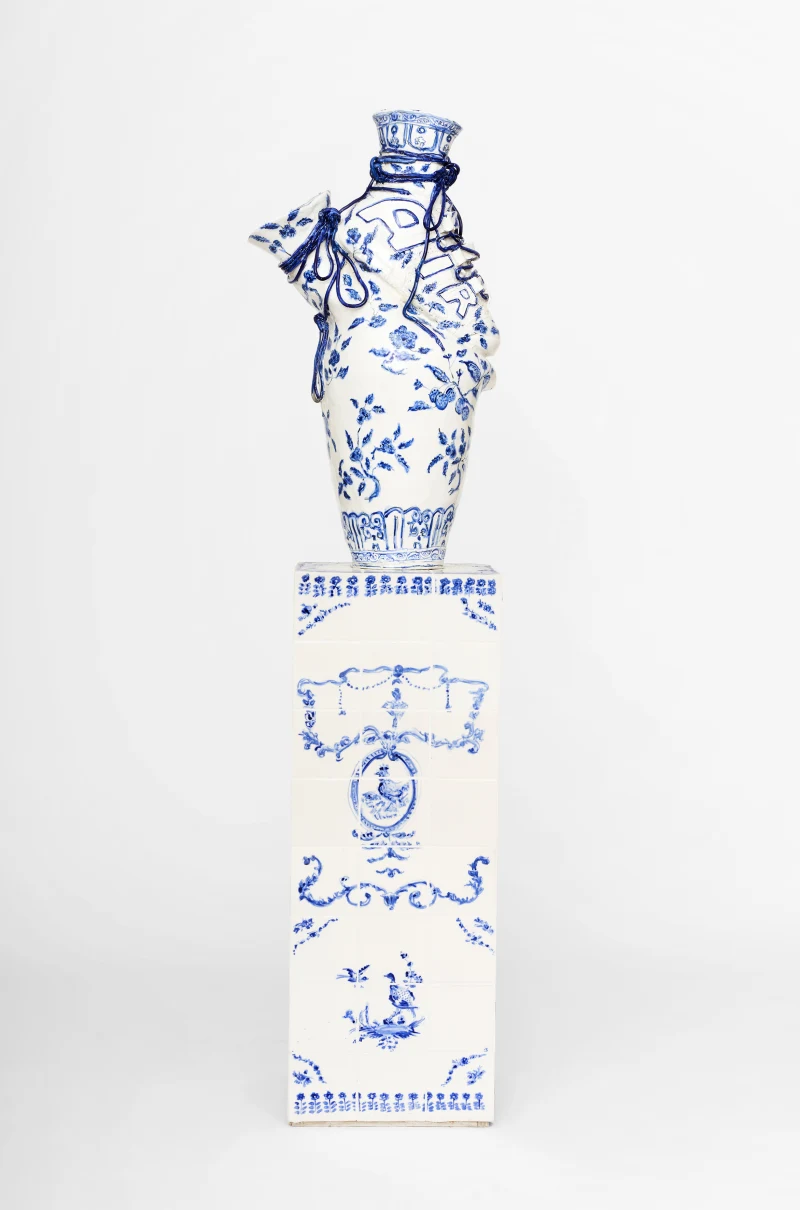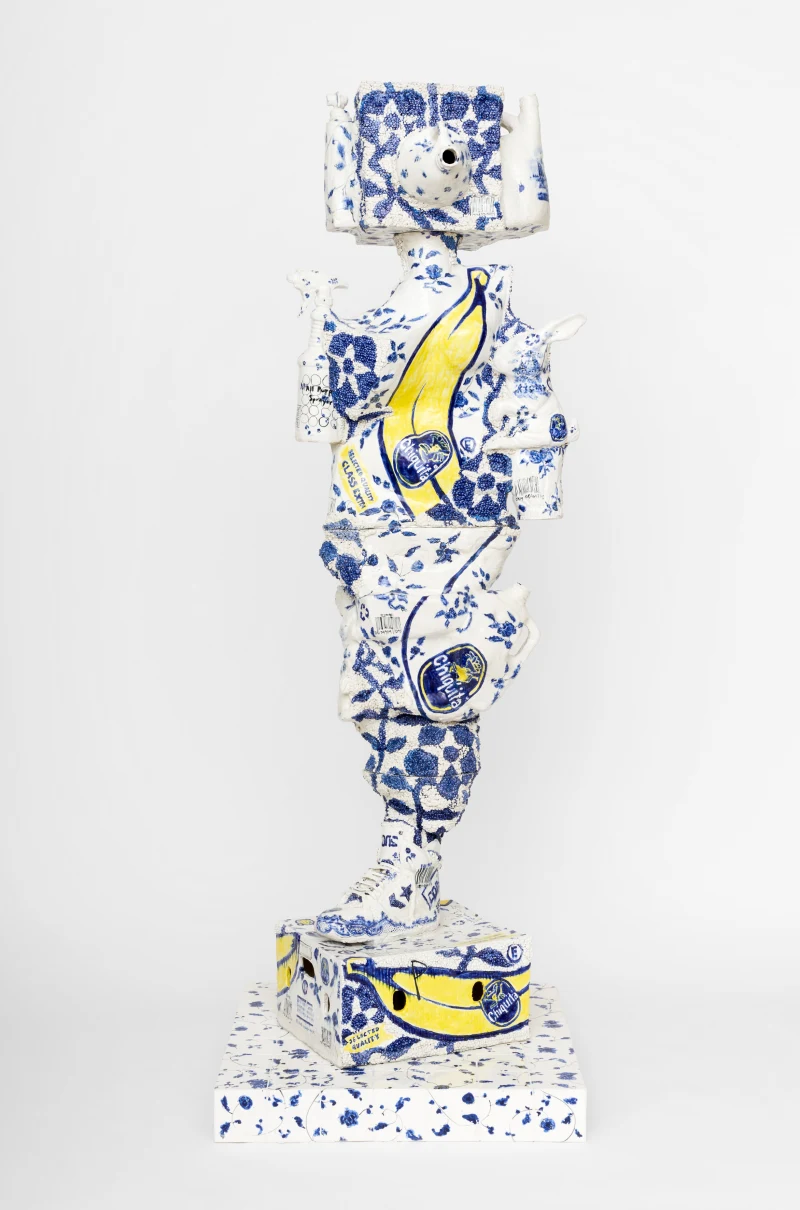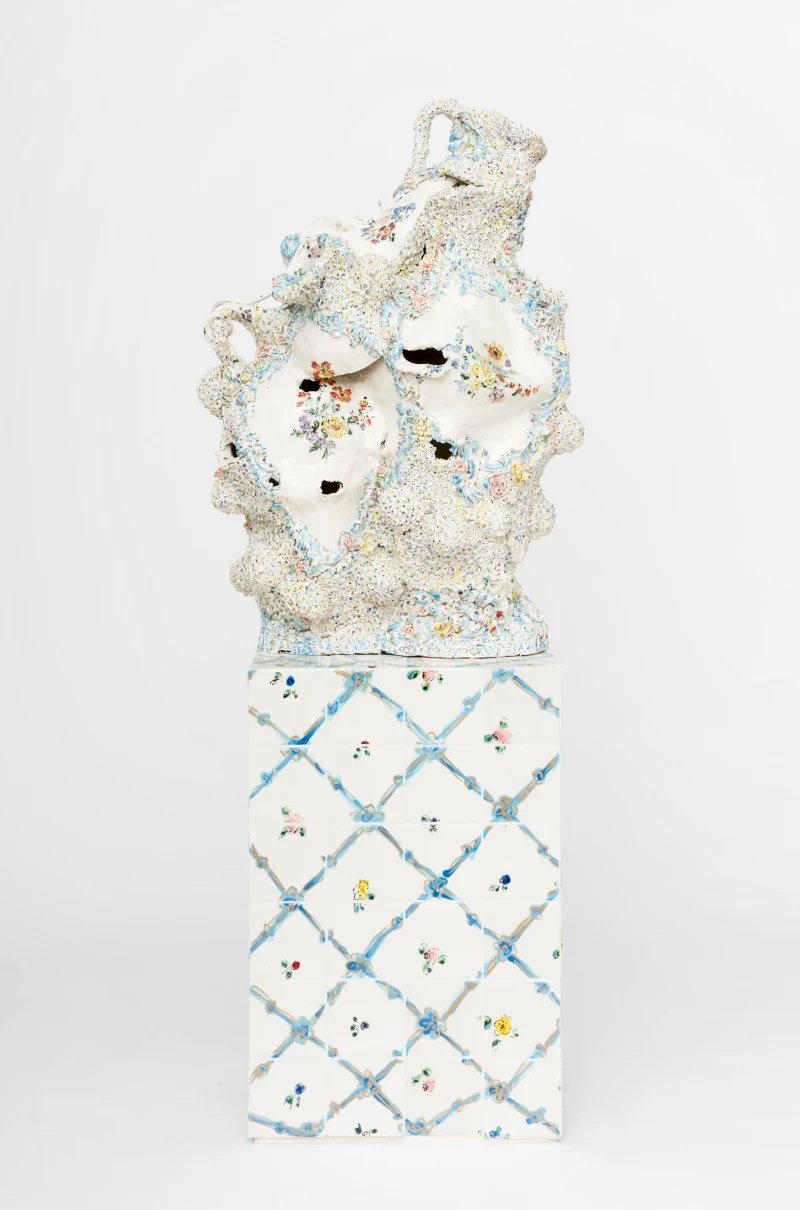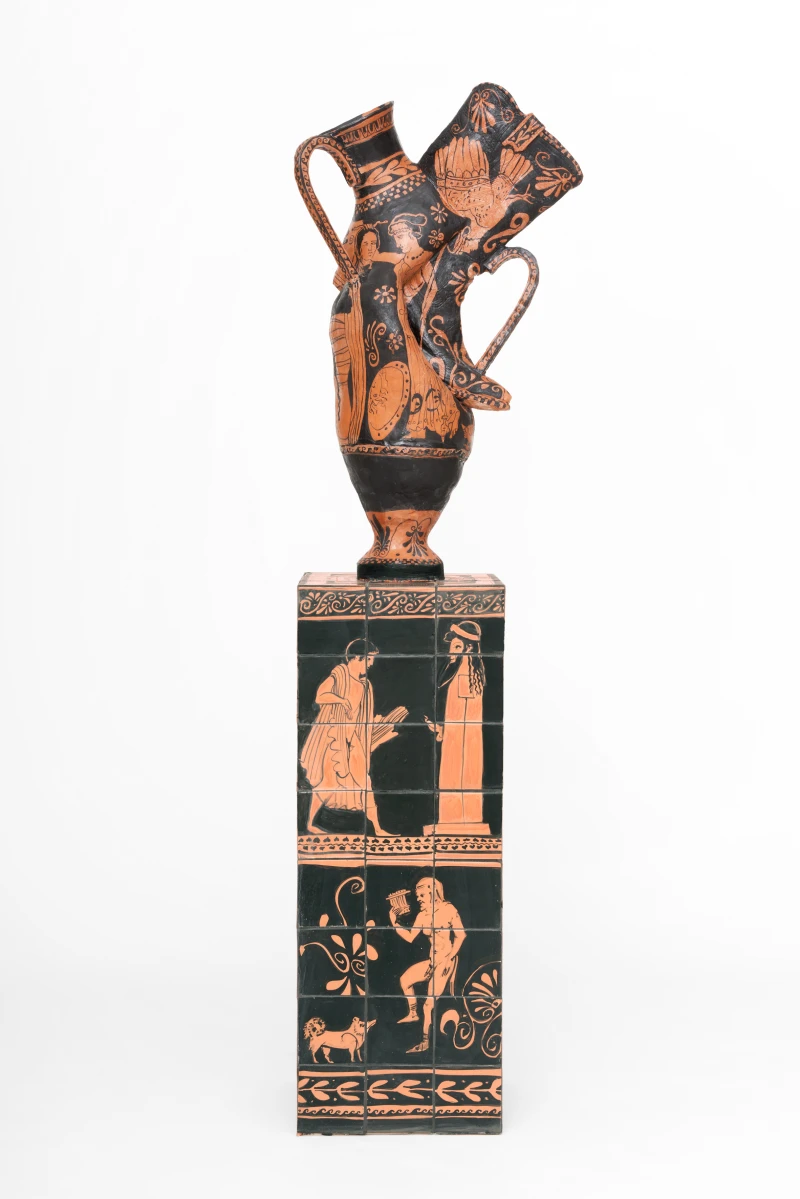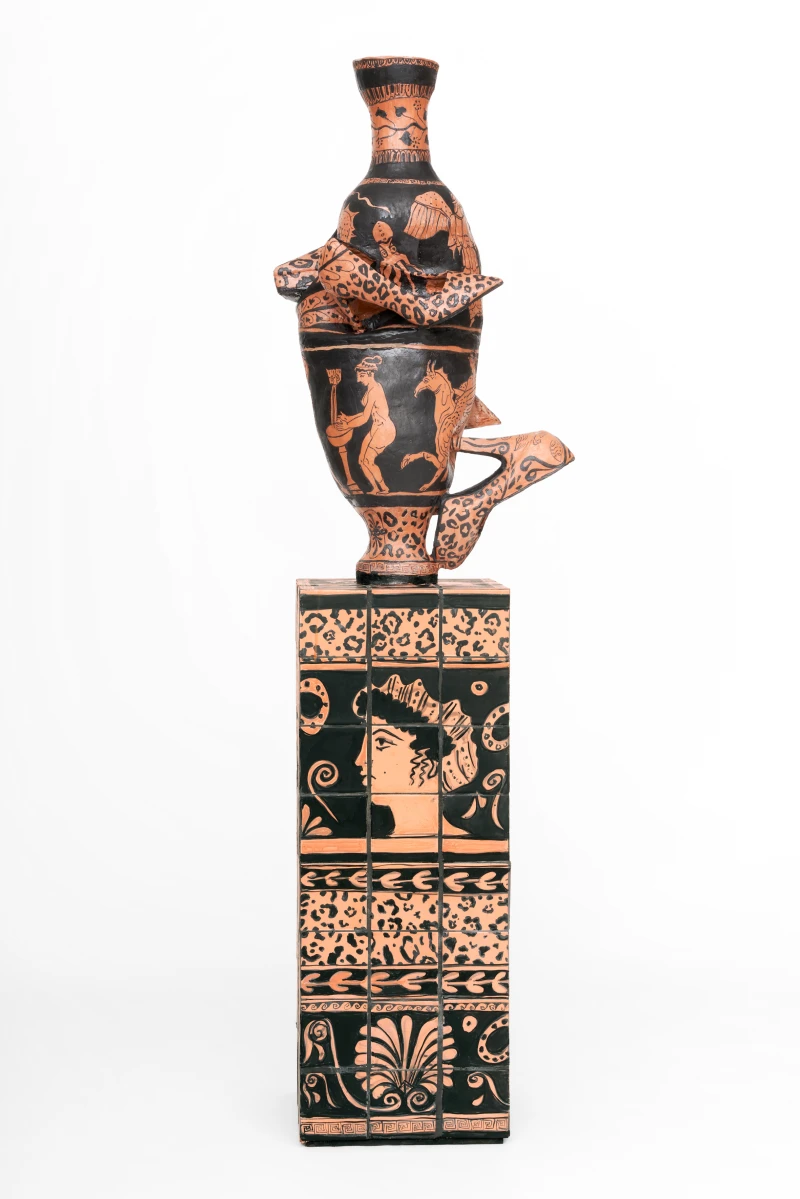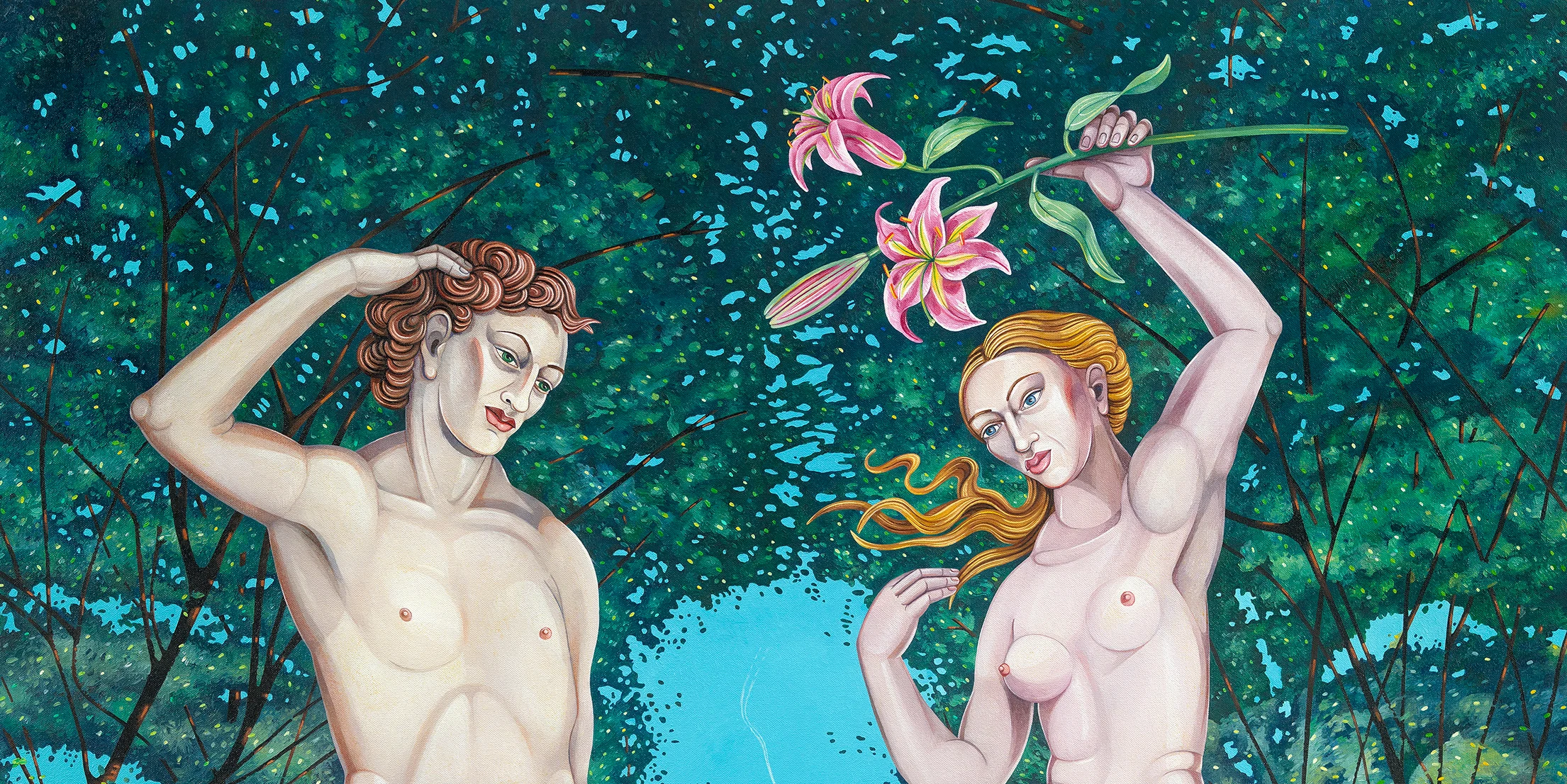
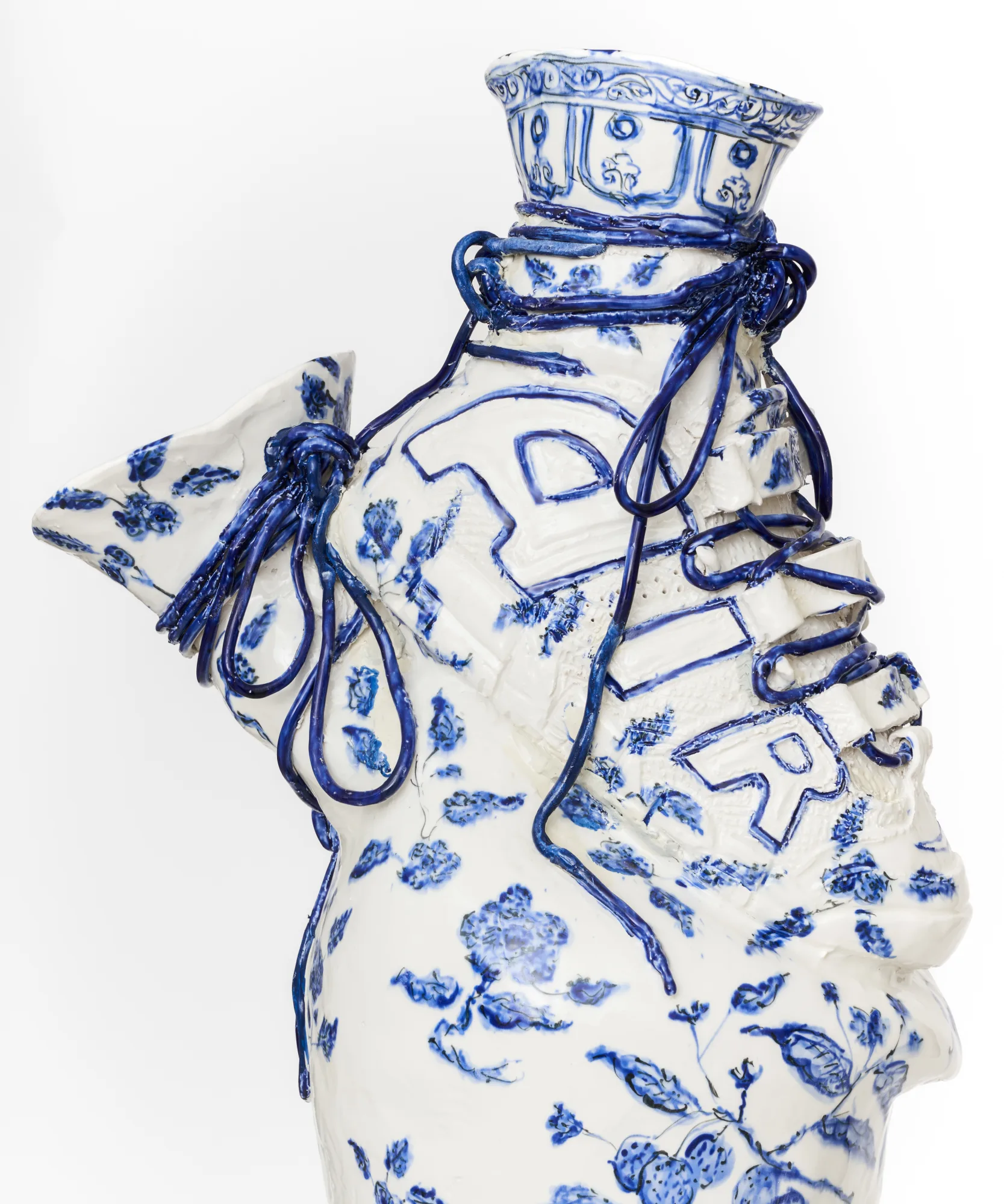
Caroline Coon & Francesca DiMattio: Snapdragons
Overview
Stephen Friedman Gallery presents 'Snapdragons', a two-person exhibition bringing together four decades of paintings by British artist Caroline Coon, alongside new ceramic sculptures by American artist Francesca DiMattio. The exhibition highlights the radical and rebellious ways in which both artists take on the histories and conventions of their mediums, using them as springboards to bend, modify, and challenge representations of women, femininity, and desire.
Caroline Coon’s career has been defined by unbridled creativity, experimentation, and an unwavering commitment to challenging societal norms. Her journey includes fighting for the rights of women, drug offenders, and sex workers; documenting the London punk scene of the 1970s through photographs and interviews (she also managed the seminal punk band The Clash); and authoring several books, including the autobiographical Laid Bare – Diary – 1983–1984, which inspired her Brothel series. Throughout it all, she has remained dedicated to her painting practice. Although artistic recognition came later in life, she is now celebrated for her figurative paintings, which blend feminist revisionist histories with a distinctly contemporary urban vision.
In her painting Sunday Afternoon - Backgammon Players (1985), Coon creates a homage of Manet’s Olympia (1863) and Jean Auguste Dominique Ingres’ Grande Odalisque (1814), subverting the traditional male-female power dynamic by positioning the unclothed Adonis figure as the object of the viewer's gaze. Set in contemporary London, the painting reveals two reclining nudes at leisure, reveling in their freedom and erotic play. In other works, such as Self-Portrait with Model (1993), Coon places herself at the center. She portrays herself as an artist, pencil in hand, ready to draw her lover, who lies in a state of heightened sexual arousal. “This is a bold statement of my identity as an artist,” wrote Coon, “who has, both socially and sexually, transgressed the sexist restrictions imposed on women by respectable society. Not only am I naked, but I am standing beside my canvas before my model who is as elegantly erect as I am. There is no polite illusion here—rather a factual, liberatory contradiction to those in the past who have denied the power and purpose of female sexuality.”
Stephen Friedman Gallery presents Snapdragons, a two-person exhibition bringing together four decades of paintings by British artist Caroline Coon, alongside new ceramic sculptures by American artist Francesca DiMattio. The exhibition highlights the radical and rebellious ways in which both artists take on the histories and conventions of their mediums, using them as springboards to bend, modify, and challenge representations of women, femininity, and desire.
Caroline Coon’s career has been defined by unbridled creativity, experimentation, and an unwavering commitment to challenging societal norms. Her journey includes fighting for the rights of women, drug offenders, and sex workers; documenting the London punk scene of the 1970s through photographs and interviews (she also managed the seminal punk band The Clash); and authoring several books, including the autobiographical Laid Bare – Diary – 1983–1984, which inspired her Brothel series. Throughout it all, she has remained dedicated to her painting practice. Although artistic recognition came later in life, she is now celebrated for her figurative paintings, which blend feminist revisionist histories with a distinctly contemporary urban vision.
In her painting Sunday Afternoon - Backgammon Players (1985), Coon creates a homage of Manet’s Olympia (1863) and Jean Auguste Dominique Ingres’ Grande Odalisque (1814), subverting the traditional male-female power dynamic by positioning the unclothed Adonis figure as the object of the viewer's gaze. Set in contemporary London, the painting reveals two reclining nudes at leisure, reveling in their freedom and erotic play. In other works, such as Self-Portrait with Model (1993), Coon places herself at the center. She portrays herself as an artist, pencil in hand, ready to draw her lover, who lies in a state of heightened sexual arousal. “This is a bold statement of my identity as an artist,” wrote Coon, “who has, both socially and sexually, transgressed the sexist restrictions imposed on women by respectable society. Not only am I naked, but I am standing beside my canvas before my model who is as elegantly erect as I am. There is no polite illusion here—rather a factual, liberatory contradiction to those in the past who have denied the power and purpose of female sexuality.”
In her 2005 painting Self-Portrait: In My Cock Hat, Coon appears naked and statuesque, wearing a crown of penises. Set against a black background, her name is emblazoned across the canvas like a marquee. She meets the viewer’s gaze with a look that is direct and confrontational. In Cunt (1999), a precursor to her 2005 self-portrait, she creates a theatrical stage set inspired by British Pop artist, Pauline Boty’s last extant painting, BUM (1966). “I decided to make a front/cunt sister painting to Boty’s back/bum as a celebration of women’s ‘sex’—the part of women’s anatomy most commonly derided as disgusting, forbidden and used as the worst of insults,” Coon explained. “Following Boty’s theme, I ‘staged’ my Cunt in an archaic temple of sexual pleasure and fecundity. In the pediment are two goddesses of Liberty, beside the birth shell of Venus. Above them is a wild English Dog rose, for love and romance. The torso is framed by two strips—Corinthian columns representing Vitruvian architectural principles that could be read as symbolising patriarchal masculinity, and beside them is a crush of roses to represent female sensuality.”
Flowers take center stage in a series of still-life paintings created between 1988 and 2008. Paying homage to the floral works of Gluck (1895–1978), a pioneer of gender fluidity, Coon’s paintings similarly reject conventional femininity. Her compositions are animated, bold, theatrical—and unapologetically sensual.
New York-based artist Francesca DiMattio operates with a similarly insurgent spirit, dismantling traditional boundaries between high and low, art and craft, masculine and feminine, history and the present. Straddling the worlds of art, architecture, and design, DiMattio’s work is non-hierarchical, eclectic, and teeming with ideas. Her pedestal sculptures riff on 18th-century French Sèvres porcelain, German Meissen ware, English Staffordshire pottery, and Ming Dynasty vases, while her vertiginous Caryatid figures draw inspiration from the draped female columnar supports of the Acropolis. DiMattio’s work is a symphony of historical and cross-cultural references. “I examine difference in each piece by putting opposites in conversation with each other,” the artist explains. “Through the making of each piece, similarities begin to bridge the gap of difference, and it all becomes sewn into a new hybrid language. Cultural time and place, gender, beauty, and value become scrambled and presented on equal footing.”
DiMattio takes her exploration further by incorporating everyday utilitarian items—detergent bottles, Chiquita banana boxes, sneakers, high-heeled shoes, and an old teddy bear—into her work. In a somewhat absurd reversal of mass production, she hand-sculpts and glazes each of these objects, then sutures them onto her more traditional ceramic forms. In sculptures such as Meissen Tide (2025) and Meissen Pump (2025), highly ornate porcelain vessels adorned with flower petals, rosettes, and floral vignettes take on Frankenstein-like proportions as they collide with a large Reebok high-top sneaker, bottles of cleaning spray, and a container of Tide. Each sculpture is punctured by wound-like fissures that contrast sharply with the delicate floral patterns spreading across the surfaces like a virus, even extending to the pedestals below. The result is a playful tension: sneakers transform into vessels, laces become ornamental details, and high art meets streetwear.
In another pair of terracotta pedestal sculptures, the artist juxtaposes ancient Greek amphoras with contemporary fashion accessories. In Attica Pump (2025), a vessel inspired by Athenian red-figure pottery from the 6th century BCE becomes host to four precariously tall high-heeled shoes that push through and pierce its clay surface. Similarly, in Attica Cowboy (2025), an oversized cowboy boot adorned with depictions of gods and goddesses is grafted onto an amphora standing on a matching tiled base. The vessel appears to sag under the boot’s weight, resembling a deflated belly. By playing with the morphology and nomenclature of ceramic forms—such as the lip, neck, shoulder, mouth, and foot—DiMattio’s sculptures take on a humanoid quality, simultaneously adorned and disfigured by gender-coded, mass-market symbols of beauty.
DiMattio’s two monumental porcelain sculptures, Chiquita Caryatid (2025) and Teddy Bear Caryatid (2022–25), represent the culmination of the artist’s madcap experimentation. In the first, a massive female figure rises from her base like Botticelli’s The Birth of Venus (c. 1485). Her body morphs and bulges with the imprint of cardboard boxes and plastic bottles, adorned with blue floral patterns, barcodes, and Chiquita banana logos. Her companion, named for the teddy bear she stands on, appears as a hyper-ornamented conqueror dressed in a porcelain-mosaic bikini. DiMattio’s figures evoke warrior queens, clad in the armor of contemporary domesticity and transcultural hybridity.
Stephen Friedman Gallery presents 'Snapdragons', a two-person exhibition bringing together four decades of paintings by British artist Caroline Coon, alongside new ceramic sculptures by American artist Francesca DiMattio. The exhibition highlights the radical and rebellious ways in which both artists take on the histories and conventions of their mediums, using them as springboards to bend, modify, and challenge representations of women, femininity, and desire.
